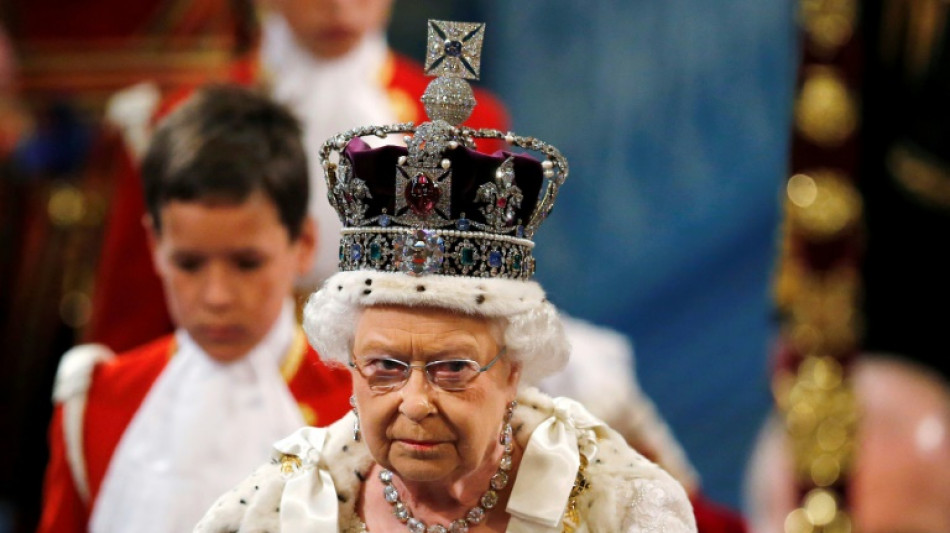
-
 Monumental art displayed in shade of Egypt's pyramids
Monumental art displayed in shade of Egypt's pyramids
-
Stocks mixed as tech titans struggle

-
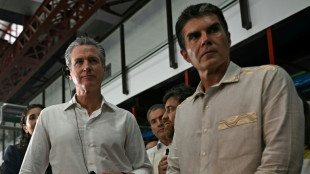 California governor Newsom slams Trump at COP30
California governor Newsom slams Trump at COP30
-
Alcaraz fights back to beat Fritz at ATP Finals

-
 Russia offers US nuclear talks in bid to ease tensions
Russia offers US nuclear talks in bid to ease tensions
-
Turkey seeks more than 2,000 years behind bars for Erdogan rival
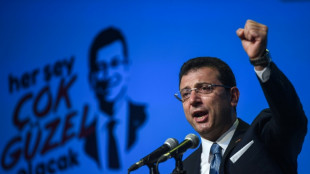
-
 UK court jails Chinese bitcoin fraudster for over 11 years
UK court jails Chinese bitcoin fraudster for over 11 years
-
Fanfare as Guinea launches enormous Simandou iron ore mine

-
 Iraqis vote in general election at crucial regional moment
Iraqis vote in general election at crucial regional moment
-
Shock follows carnage after suicide bombing in Islamabad

-
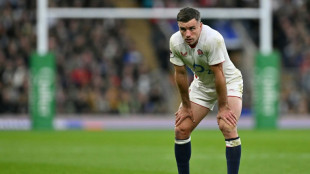 Ford returns to pull England strings against All Blacks
Ford returns to pull England strings against All Blacks
-
Stocks mixed as end to US shutdown appears closer
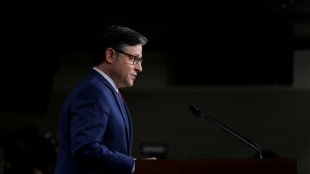
-
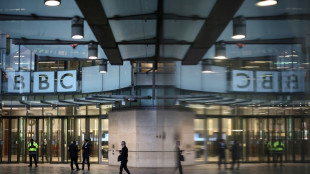 BBC must 'fight' for its journalism, outgoing chief says amid Trump lawsuit threat
BBC must 'fight' for its journalism, outgoing chief says amid Trump lawsuit threat
-
Atalanta turn to Palladino after Juric sacking

-
 'Sayyid says': Influential Shiite cleric's supporters boycott Iraq vote
'Sayyid says': Influential Shiite cleric's supporters boycott Iraq vote
-
'It's un-British': lawmakers raise concerns about aquarium penguins

-
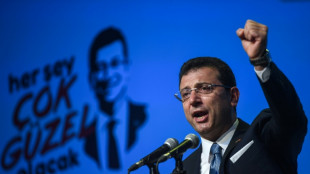 Prosecutor files 142 charges against Istanbul mayor, a top Erdogan critic
Prosecutor files 142 charges against Istanbul mayor, a top Erdogan critic
-
Agha hundred lifts Pakistan to 299-5 in 1st Sri Lanka ODI

-
 German court rules against OpenAI in copyright case
German court rules against OpenAI in copyright case
-
Calls for 'mano dura' as crime-rattled Chile votes for president

-
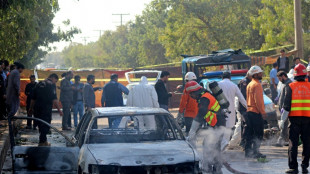 Pakistani Taliban claim deadly suicide attack in Islamabad
Pakistani Taliban claim deadly suicide attack in Islamabad
-
BBC grapples with response to Trump legal threat

-
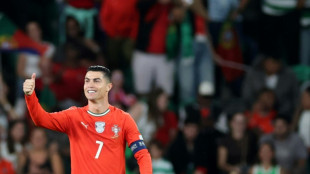 Cristiano Ronaldo says 2026 World Cup 'definitely' his last
Cristiano Ronaldo says 2026 World Cup 'definitely' his last
-
Trump says 'we've had a lot of problems' with France
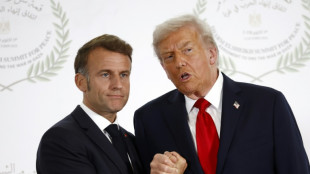
-
 Stocks mostly rise as end to US shutdown appears closer
Stocks mostly rise as end to US shutdown appears closer
-
'Splinternets' threat to be avoided, says web address controller

-
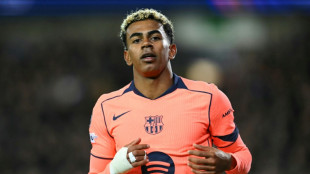 Yamal released from World Cup qualifiers by 'upset' Spanish federation
Yamal released from World Cup qualifiers by 'upset' Spanish federation
-
China's 'Singles Day' shopping fest loses its shine for weary consumers
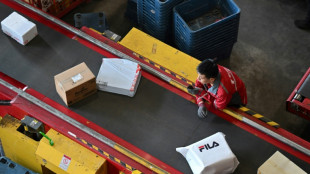
-
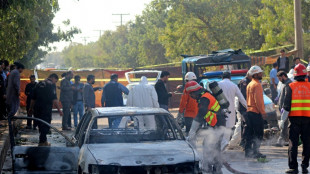 Suicide bombing in Islamabad kills 12, wounds 27
Suicide bombing in Islamabad kills 12, wounds 27
-
Philippines digs out from Typhoon Fung-wong as death toll climbs

-
 Iraqis vote in general election at a crucial regional moment
Iraqis vote in general election at a crucial regional moment
-
Asian stocks wobble as US shutdown rally loses steam
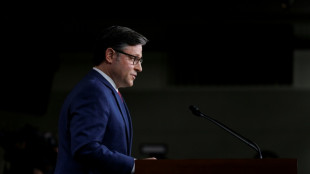
-
 UK unemployment jumps to 5% before key govt budget
UK unemployment jumps to 5% before key govt budget
-
Japanese 'Ran' actor Tatsuya Nakadai dies at 92

-
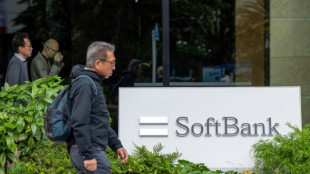 AI stock boom delivers bumper quarter for Japan's SoftBank
AI stock boom delivers bumper quarter for Japan's SoftBank
-
Asian stocks struggle as US shutdown rally loses steam

-
 India probes deadly Delhi blast, vows those responsible will face justice
India probes deadly Delhi blast, vows those responsible will face justice
-
Pistons win streak hits seven on night of NBA thrillers
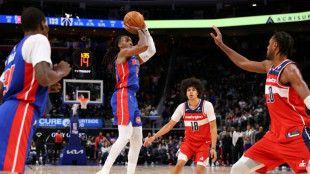
-
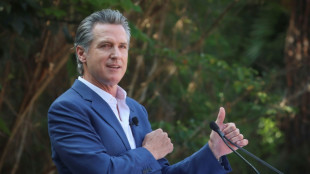 US state leaders take stage at UN climate summit -- without Trump
US state leaders take stage at UN climate summit -- without Trump
-
Burger King to enter China joint venture, plans to double stores
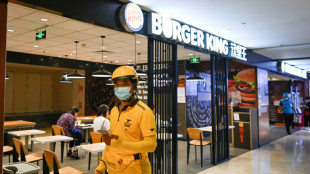
-
 Iraqis vote in general election in rare moment of calm
Iraqis vote in general election in rare moment of calm
-
Philippines digs out from Typhoon Fung-wong as death toll climbs to 18

-
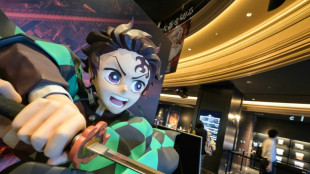 'Demon Slayer' helps Sony hike profit forecasts
'Demon Slayer' helps Sony hike profit forecasts
-
Who can qualify for 2026 World Cup in next round of European qualifiers

-
 Ireland's climate battle is being fought in its fields
Ireland's climate battle is being fought in its fields
-
Sony hikes profit forecasts on strong gaming, anime sales

-
 End to US government shutdown in sight as stopgap bill advances to House
End to US government shutdown in sight as stopgap bill advances to House
-
'Western tech dominance fading' at Lisbon's Web Summit

-
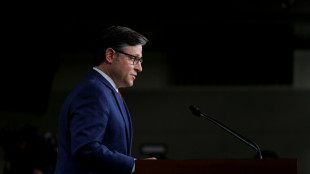 Asian stocks rise as record US shutdown nears end
Asian stocks rise as record US shutdown nears end
-
'Joy to beloved motherland': N.Korea football glory fuels propaganda
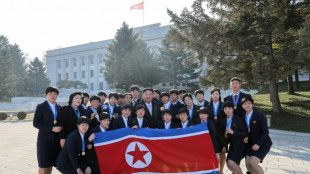

Crown Jewels: The royal family's precious gems
The Crown Jewels form the centrepiece of the royal coronation, and symbolise the pomp and history of the British monarchy over the centuries.
- The Imperial State Crown -
The crown was commissioned for king George VI's coronation in 1937.
Used for formal events such as the state opening of parliament, Queen Elizabeth II wore it following her coronation ceremony.
The crown bears 2,868 diamonds, 269 pearls, 17 sapphires and 11 emeralds.
It weighs 1,060 grams (2.3 pounds) and is 31.5 centimetres (12.4 inches) tall.
The second-largest stone cut from the Cullinan Diamond -- the largest diamond ever mined -- adorns the front.
- The Sovereign's Sceptre -
A gold rod with a globe, cross and dove at the top, the sceptre's design symbolises the Christian Holy Ghost.
It is associated with the monarch's pastoral role towards the people.
It weighs 1,150 grams and is 110.2 centimetres long.
- The Sovereign's Sceptre -
The sceptre represents the monarch's temporal power and good governance and complements the spiritual power symbolised by the Sovereign's Sceptre with Cross.
It weighs 1,170 grams and is 92.2 centimetres long.
The largest colourless cut diamond in the world, the Cullinan I, reigns at the top. It weighs 106 grams and is known as the "First Star of Africa".
The diamond's weight meant the sceptre had to be reinforced in 1910.
- The Sovereign's Orb -
The orb represents the monarch's power and the Christian world.
The gold piece of jewellery is surrounded by a band of diamonds, emeralds, rubies, sapphire and pearls and topped with amethyst and a cross.
It is 27.5 centimetres high and weighs 1,320 grams.
- The gold Ampulla -
The eagle-shaped vessel holds the consecrated oil used in coronation ceremonies.
The eagle's head comes off to allow oil to be poured into the vessel.
The design is based on a legend that the Virgin Mary appeared to medieval English saint Thomas Becket and handed him a golden eagle and oil to anoint future English kings.
It weighs 660 grams and measures 20.7 x 10.4 centimetres.
- The Spurs -
Gold, leather, velvet and gold thread make up one of the most ancient parts of Britain's royal coronation paraphernalia.
The use of spurs to represent knighthood in coronations dates back to the coronation of Richard I in 1189.
Spurs were traditionally fastened to the king's feet during coronation ceremonies but presented and placed on the altar for queens.
- The Cullinan Diamond -
It was the largest diamond ever mined when discovered in South Africa in 1905, weighing 621 grams in its uncut state.
The Transvaal government presented it to King Edward VII on his 66th birthday in 1907 as a gesture of reconciliation after the Second Boer War (1899-1902).
Three employees of Asschers of Amsterdam worked 14-hour days for eight months to cut and polish nine large stones from the original gem.
When workers began to cut the diamond, the first blow broke the knife rather than the diamond.
- St Edward's Crown -
Crown jeweller Robert Viner made it in 1661 for the coronation of king Charles II, after the previous medieval crown was melted down by parliamentarian rebels in 1649 during the English Civil War.
Monarchs did not wear the solid gold crown in coronation ceremonies for more than 200 years as it was too heavy.
It weighs 2,040 grams and is 30.2 centimetres tall.
- Coronation ring -
The ring dates back to the coronation of King William IV in 1831.
Queen Victoria did not wear it for her coronation in 1838 as her fingers were too small.
- Purple Robe of Estate -
Twelve seamstresses from the Royal School of Needlework took 3,500 hours to make it.
The robe is made of silk and embroidered with the monarch's cipher, wheat ears and olive branches.
- The Stone of Scone -
Also known as the "Stone of Destiny", it is the ancient symbol of Scotland's monarchy.
The sandstone slab weighs 152 kilograms (335.1 pounds).
English king Edward I seized it in 1296 and incorporated it into the throne at Westminster, London.
Scottish nationalists stole it from London's Westminster Abbey in 1950 and it later reappeared in Arbroath Abbey, Scotland. It was formally returned to Scotland in 1996.
The stone will only leave Scotland again for a coronation at Westminster Abbey.
P.Santos--AMWN
